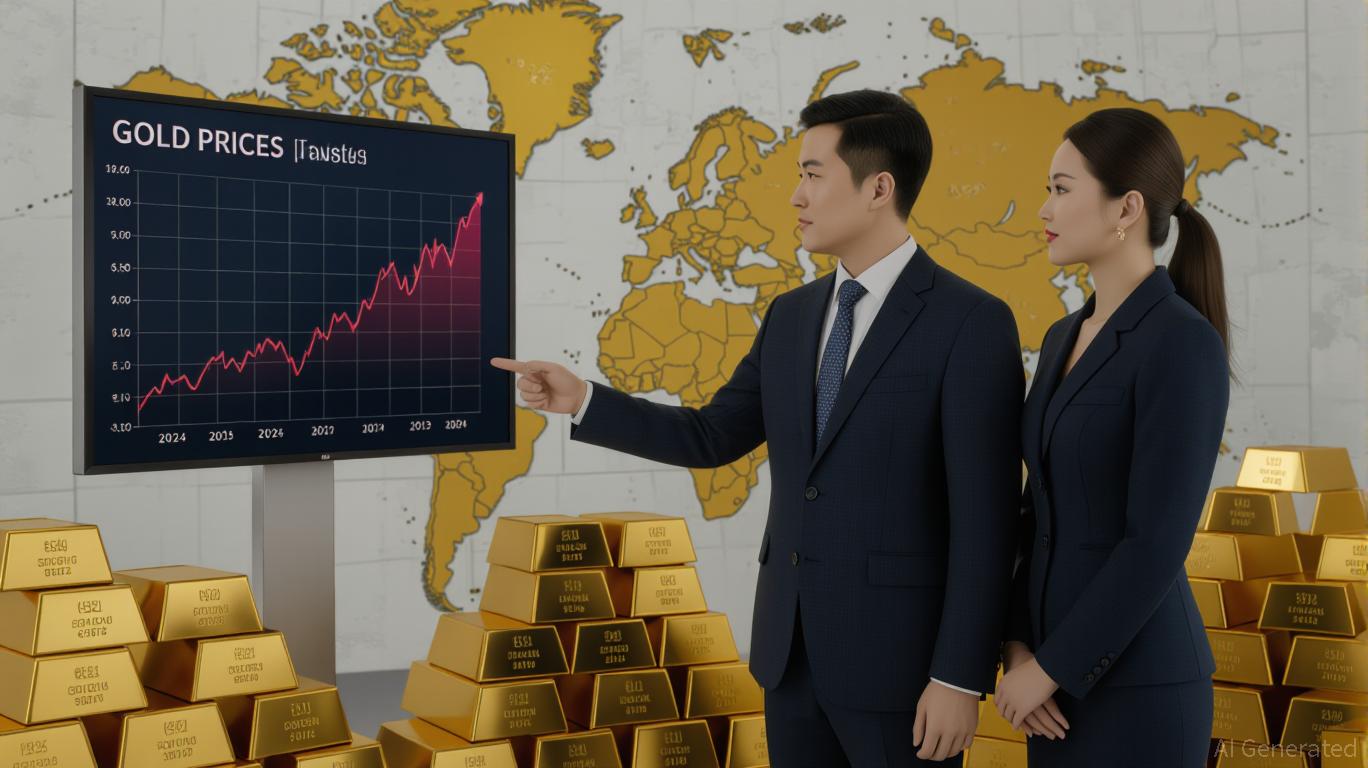
The global gold market is undergoing a seismic shift, driven not by economic cycles alone but by a deliberate, coordinated effort by Russia and China to reduce their reliance on the U.S. dollar. As these two economic heavyweights amass gold at unprecedented rates, the implications for investors extend far beyond the price of bullion. This is no longer a story about a commodity—it is a narrative of monetary sovereignty, geopolitical realignment, and the redefinition of global reserve assets. For gold investors, the stakes have never been higher.
The Strategic Logic of Gold Accumulation
Russia’s Central Bank (CBR) now holds 2,333.1 tonnes of gold, a 40% increase since 2020. This surge is not accidental. After the 2022 invasion of Ukraine and the subsequent freezing of Russian dollar assets, Moscow has prioritized gold as a hedge against financial isolation. By purchasing 80% of domestic gold production and nationalizing key producers, Russia is building a reserve that is both geographically and politically insulated. Meanwhile, China’s official reserves of 2,279.6 tonnes mask a likely much larger hoard—estimates suggest as much as 5,065 tonnes. Beijing’s purchases, particularly in 2023 and 2024, were strategic: diversifying a $3.3 trillion foreign exchange reserve portfolio away from dollar-based assets and mitigating risks of U.S. debt instability.
The logic is clear: gold is the ultimate non-sovereign asset. Unlike dollars or euros, it cannot be weaponized. When Western powers froze Russian assets in 2022, they inadvertently demonstrated the vulnerability of fiat reserves. For nations seeking to insulate themselves from such shocks, gold offers a tangible, uncorrelated store of value.
De-Dollarization and the Reshaping of Global Reserves
The de-dollarization movement is no longer a fringe trend. Central banks in emerging markets now hold 9% of their reserves in gold, up from 4% a decade ago. This shift is accelerating as confidence in the dollar erodes. In 2025, global central bank gold purchases hit 244 metric tons in Q1 alone—triple the five-year average. China’s pilot program allowing insurance firms to allocate 1% of assets to gold has further boosted institutional demand.
The U.S. dollar’s share of global reserves has dipped below 47%, while gold’s share approaches 20%. This is not a temporary anomaly but a structural realignment. Geopolitical risks—ranging from Trump-era protectionism to the weaponization of sanctions—have made investors wary of dollar-based assets. For Russia and China, the message is clear: gold is the new default reserve.
The Strategic Alliance Between Russia and China
The partnership between Moscow and China is the most consequential development in the de-dollarization narrative. In 2025, bilateral gold trade between the two countries surged by 80%, with settlements conducted in rubles and yuan. This bypasses Western financial systems entirely, reducing exposure to dollar volatility. Russia’s new gold exchange in St. Petersburg, set to launch by year-end, will further insulate its market from geopolitical pressures.
For investors, this alliance signals a broader trend: the emergence of a parallel gold ecosystem. If Russia and China succeed in creating alternative pricing mechanisms and trade networks, the global gold market could fragment, with distinct “dollar-linked” and “de-dollarized” segments. Such fragmentation would amplify gold’s role as a geopolitical hedge but could also introduce pricing volatility.
Investment Implications for a De-Dollarized World
The strategic case for gold has never been stronger. A 5%-10% allocation to gold can reduce portfolio drawdowns during crises without sacrificing returns. For investors, the key is to think beyond physical bullion. Gold ETFs (e.g., GLD, IAU) offer liquidity, while mining equities like Barrick Gold (GOLD) and Newmont (NEM) provide exposure to rising prices.
However, the risks are not negligible. If the de-dollarization narrative falters—say, if the U.S. dollar rebounds or geopolitical tensions ease—gold’s premium could contract. Investors must also watch for market saturation: central banks hold 20% of global gold supply, and further purchases could drive prices higher.
The Road Ahead: Opportunities and Risks
By 2026, gold prices are projected to average $3,675 per ounce, with $4,000 a realistic target. This is driven by sustained central bank demand, geopolitical uncertainty, and the erosion of dollar confidence. Yet, investors must remain vigilant. The velocity of the current bull market exceeds historical cycles, suggesting both momentum and potential overvaluation.
For those willing to navigate the complexities of a de-dollarized world, gold offers a unique combination of strategic and financial value. It is not just a hedge against inflation or currency debasement—it is a statement of independence in an era of fractured global trust.
In conclusion, the gold market is becoming a battleground for monetary sovereignty. Russia and China’s push for independence is reshaping not only the geopolitics of reserves but also the investment landscape. For investors, the lesson is clear: in a world where the dollar’s dominance is no longer a given, gold is no longer optional—it is essential.
